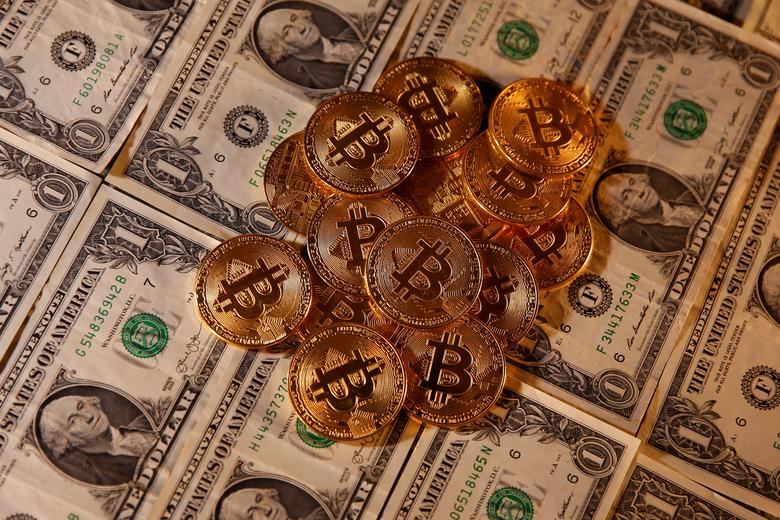Bitcoin just over $28,000 in a first since June of last year
On Sunday, Bitcoin reached just over $28,000 amid a global banking crisis before it dropped again on Monday to reach $27,383.
-

Representations of virtual currency Bitcoin and US dollar banknotes are seen in this picture illustration taken January 27, 2020 (Reuters).
Amid the global banking crisis, trading data on Monday indicated that the largest cryptocurrency, Bitcoin, has topped $28,000 for the first time since June 2022.
While Bitcoin was trading at just over $28,000 on Sunday evening, on Monday morning, as of 4:38 am, Bitcoin was trading at around $27,383 on the Binance cryptocurrency exchange.
At the end of January, it was noted that Bitcoin's performance has been in an upward trend in the past months as the US Federal Reserve has been expected to pivot on interest rates, and traders' risk-taking approach is back on the market this year.
A Bloomberg report on January 31, noted that while the cryptocurrency soared almost 40% in 2022, Fed bonds have barely recovered from last year's historic losses and argued that, despite the fact that the Fed's anticipated halt on hiking interest rates has increased the appetite on bonds again, they are still short from compensating 2022's losses.
200 US banks are under risk: Study
According to recent studies, nearly 200 American banks may have financial complications that have not yet been revealed, suggesting that the banking crisis discovered a week ago in the largest economy in the world may be more severe than initially assessed to be.
In Monetary Tightening and US Bank Fragility in 2023, researchers contended that "there are 186 banks with a negative insured deposit coverage ratio”.
“Our calculations suggest these banks are certainly at a potential risk of a run, absent other government intervention or recapitalization.” the researchers explain.
The study published last week showed that the banks with troubled balanced sheets had exposure to $300 billion worth of insured deposits.
“The losses to the deposit insurance fund would total approximately $10 billion,” the study reads. “If the FDIC shut these banks following a run, there would be no funds left for the remaining uninsured depositors. In other words, the decision [by depositors] to run would have been a rational one.”
"Biden’s economic policies created the conditions that lead to SVB’s large losses and eventually the bank run," Republican Congressman Gosar said in a statement.
"SVB invested a large portion of its deposits in mortgage-backed securities and Treasury bonds. When interest rates were low, thanks in large part to President Trump, it seemed like a sound investment. However, when Bidenflation started to run out of control it forced the Fed to raise interest rates," he added.
Read more: Last bid to avert financial crisis: UBS offers $1bn for Credit Suisse

 3 Min Read
3 Min Read








